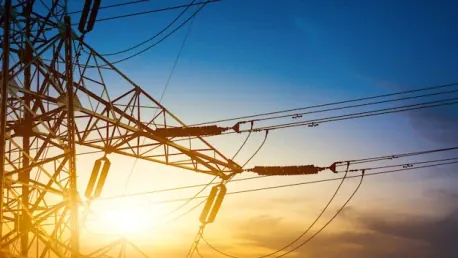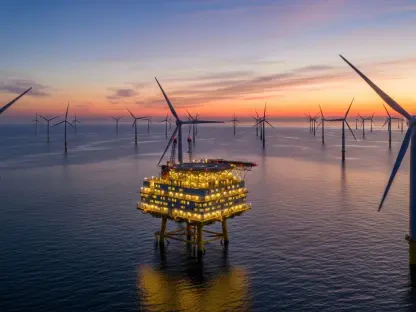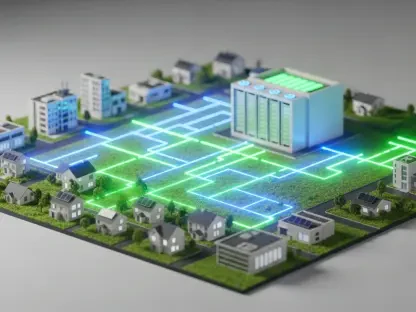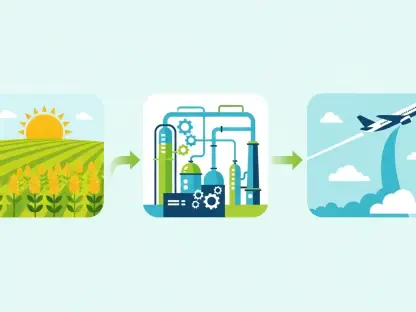Kenya has made remarkable strides in its pursuit of universal electricity access and clean cooking solutions by 2030, catalyzing substantial advancements in its energy sector. According to a new report by the International Energy Agency (IEA), these achievements have established Kenya as a regional leader, thanks to effective policy implementation and infrastructural development.
Universal Electricity Access and Electrification Initiatives
Kenya’s electrification rates have experienced significant growth, with an impressive increase from 37% in 2013 to 79% in 2023. This achievement can largely be attributed to the Last Mile Connectivity Project (LMCP) launched in 2015. The LMCP has succeeded in connecting approximately 9 million rural residents to electricity, making noticeable strides in reducing the energy access gap. These efforts are poised to continue, with ongoing projects aimed at connecting an additional 280,000 households across the country.
A key highlight of Kenya’s electrification strategy has been its pioneering efforts in adopting off-grid solar solutions. Kenya has emerged as the leading market for off-grid solar home systems in East Africa, with over three-quarters of the region’s sales occurring within the country. The success of these off-grid solar options is evident, particularly in remote and underserved areas, affording many Kenyan households reliable access to electricity through solar mini-grids and standalone systems.
Renewable Energy and Clean Energy Technologies
Kenya’s approach to electricity generation is characterized by its reliance on low-emission technologies, making it a front-runner in clean energy development. Geothermal, hydro, wind, and solar sources collectively account for nearly 90% of the country’s energy mix. Notable projects like the Lake Turkana Wind Project, the largest wind farm in Africa, and substantial geothermal initiatives have set Kenya apart as a global leader in renewable energy. Geothermal energy alone constitutes almost one-third of the total electricity generation capacity, underscoring the critical role it plays in the country’s energy portfolio.
The strategic deployment of these clean energy technologies has significantly benefited the lives of numerous Kenyans, particularly the most vulnerable populations. The successful integration of renewable sources into the national grid has not only improved energy access but has also promoted environmental sustainability. Kenya’s progress in this realm sets a commendable example for other developing nations striving to achieve similar energy targets.
Progress in Clean Cooking Solutions
Addressing the challenge of clean cooking solutions has brought notable improvements, with the access rate for clean cooking technologies rising from 10% in 2013 to over 30%. Despite the progress, a significant portion of Kenya’s rural population continues to rely on harmful fuels such as firewood, charcoal, and kerosene. The Kenya National Cooking Transition Strategy (KNCTS), introduced recently, aims to combat this issue by targeting universal access to clean cooking solutions by 2028.
The KNCTS emphasizes the need to integrate clean cooking solutions into broader energy planning, bolstering fuel supplies, and enhancing technology distribution. This strategic approach is designed to overcome enduring obstacles, such as fuel price volatility and the high costs associated with improved cookstoves. Ensuring the availability and affordability of clean cooking technologies remains imperative to transitioning a larger segment of the population towards sustainable and health-friendly cooking practices.
Regulatory Reforms and Grid Modernization
Kenya is actively working to modernize and expand its electricity grid to keep pace with increasing energy demands. New regulatory reforms set to take effect will pave the way for private investment in the transmission and distribution sectors. These reforms are expected to foster competition, reduce costs, and enhance operational efficiency, addressing several longstanding challenges within the sector.
The current grid faces significant losses, estimated at 23% in 2023, due to technical glitches, theft, and billing inaccuracies. To tackle these issues, considerations for smart grid solutions and advanced management systems are underway. These innovative technologies aim to improve grid reliability, reduce losses, and enhance overall performance. The ongoing efforts in grid modernization and regulatory reform reflect Kenya’s commitment to achieving a robust and efficient energy infrastructure.
Path Forward
Kenya has made impressive progress toward achieving universal electricity access and clean cooking solutions by 2030, sparking significant developments in its energy sector. A recent report by the International Energy Agency (IEA) highlights these successes, positioning Kenya as a regional leader. This has been made possible through the effective implementation of policies and major infrastructural development. The country’s commitment to sustainable energy solutions not only promises to improve the quality of life for its citizens but also serves as a model for other nations striving for similar achievements. By focusing on renewable energy sources and innovative technologies, Kenya aims to ensure that its power supply is both reliable and environmentally friendly. The government’s proactive approach has attracted substantial investments, further accelerating the nation’s journey towards energy independence and sustainability. As Kenya continues to develop its energy infrastructure, it stands as an inspiring example of how strategic initiatives can drive meaningful progress and foster a greener future.









